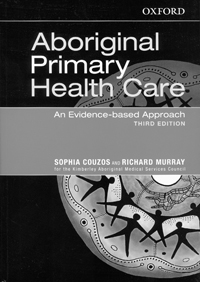
Aboriginal primary health care. An evidence-based approach. 3rd ed.
Sophia Couzos, Richard Murray. Melbourne: Oxford University Press, 2007 (i + 862 pp). ISBN 978 0 19 555138 9.
- Timothy P M Senior1
- University of Sydney, Sydney, NSW
Correspondence:
Online responses are no longer available. Please refer to our instructions for authors page for more information.




